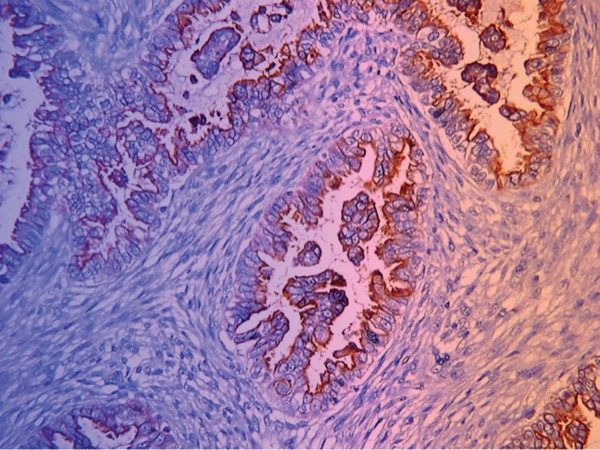SAN FRANCISCO—The early detection of pancreatic ductal adenocarcinoma may soon be realized, based on the accuracy of microRNA-based liquid biopsy assays, according to new research.
By pairing cell-free and exosomal microRNAs (cf- and exo-miRNAs), senior investigator Ajay Goel, PhD, and his team have created a panel of 13 biomarkers with an accuracy of up to 97% for PDAC.
“Even in the earlier stages of PDAC, these markers are about 91% accurate. And when we use them together with CA 19-9, the accuracy improves significantly, even for stage I-II cancers,” said Dr. Goel, a professor and the chair of the Department of Molecular Diagnostics and Experimental Therapeutics at Beckman Research Institute at City of Hope, in Duarte, Calif., presenting the results at the 2025 ASCO Gastrointestinal Cancers Symposium.
While most PDACs are found too late for treatment to be lifesaving, the window for their detection is actually wide. “A large body of data suggests that the time from the first mutation in the KRAS gene and the precursor lesions to full-blown invasive cancer and metastasis is 15 to 20 years,” Dr. Goel said. “If we had the tools, we would have an opportunity for early detection.”
Harnessing miRNAs
The future of cancer detection lies in liquid biopsy biomarkers. The current protein- and DNA-based tests suffer from inadequate sensitivity and specificity for early pancreatic cancer. Better results might be achieved with miRNAs, he said, “which are abundantly expressed in cancer, highly stable and easily detectable in bodily fluids.” These miRNAs exist in the form of cf-miRNAs in blood, which are highly sensitive but lack specificity, and exo-miRNAs within extracellular vesicles, which “basically carry a ZIP code,” he said.
{RELATED-VERTICAL}Dr. Goel’s team hypothesized that when combined, these two miRNA forms would be sensitive and specific enough to diagnose early-stage pancreatic cancer. Thus, they developed an exosome-based transcriptomic signature. In a study of 101 individuals, the cf-miRNA/exo-miRNA panel discriminated patients with PDAC from controls (Gastroenterology 2022;163[5]:1252-1266). Further refinement led to a panel of 13 biomarkers that detected PDAC at all stages of the disease and, most importantly, was equally robust for stages I and II. When used along with CA 19-9, which alone can miss 15% of cases, the overall diagnostic accuracy was significantly improved (area under the curve [AUC], 0.99). This combination has created “almost a perfect test,” he said, “which is an ambitious goal.”
The team’s approach has been further developed and is now being evaluated in the PANXEON study involving 1,207 PDAC patients of all stages and controls. Early findings for the training, validation and testing cohorts show AUC values of 0.95 to 0.98 for all stages, including stages I and II; again, the test is most accurate when used in conjunction with CA 19-9. The markers are specific for pancreatic cancer, and they are useful in monitoring disease activity after surgery.
—Caroline Helwick
Dr. Goel reported no relevant financial disclosures.


